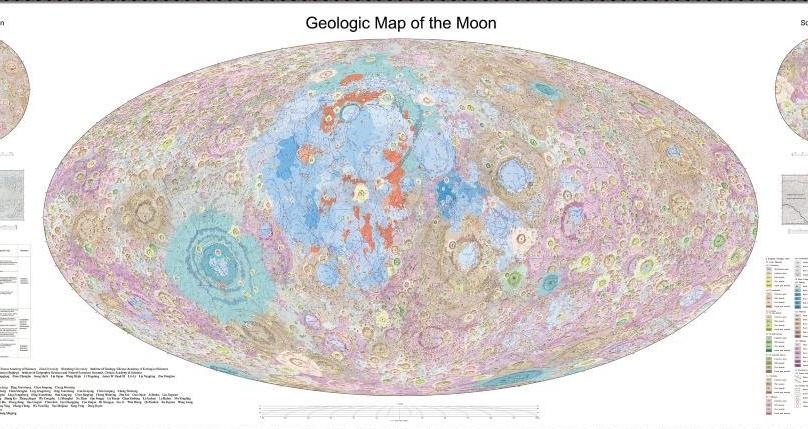China publishes world's first high-definition lunar geologic atlas
Xinhua, April 30, 2024 Adjust font size:
China Sunday released a set of geologic atlas of the global moon with a scale of 1:2.5 million, which is the first complete high-definition lunar geologic atlas in the world, providing basic map data for future lunar research and exploration. This photo shows the set of Geologic Atlas of the Lunar Globe. (Chinese Academy of Sciences/Handout via Xinhua)
China Sunday released a set of geologic atlas of the global moon with a scale of 1:2.5 million, which is the first complete high-definition lunar geologic atlas in the world, providing basic map data for future lunar research and exploration.
This set of geologic atlas, available in Chinese and English, includes the Geologic Atlas of the Lunar Globe and the Map Quadrangles of the Geologic Atlas of the Moon, according to the Institute of Geochemistry, Chinese Academy of Sciences (CAS).
"The geologic atlas of the moon is of great significance for studying the evolution of the moon, selecting the site for future lunar research station and utilizing lunar resources. It can also help us better understand the Earth and other planets in the solar system, such as Mars," said Ouyang Ziyuan, who is a CAS academician and a well-known lunar scientist.
"The world has witnessed a significant progress in the field of lunar exploration and scientific research over the past decades, which have greatly improved our understanding of the moon. However, the lunar geologic maps published during the Apollo era have not been changed for about half a century, and are still being used for lunar geological research. With the improvements of lunar geologic studies, those old maps can no longer meet the needs of future scientific research and lunar exploration," said Liu Jianzhong, a senior researcher from the Institute of Geochemistry, CAS.


